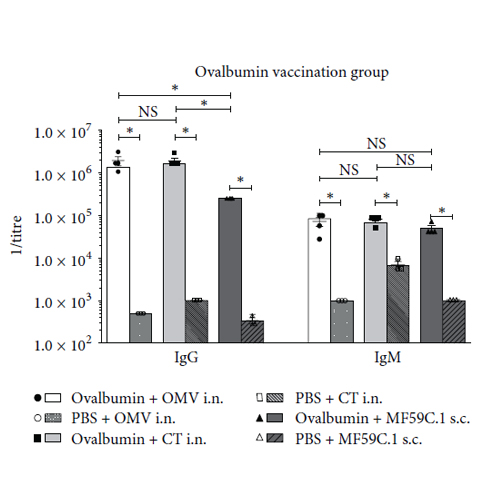Comparison of Intranasal Outer Membrane Vesicles with Cholera Toxin and Injected MF59C.1 as Adjuvants for Malaria Transmission Blocking Antigens AnAPN1 and Pfs48/45
23-May-2016
Journal of Immunology Research, Volume 2016, Article ID 3576028, 11 pages, http://dx.doi.org/10.1155/2016/3576028
Journal of Immunology Research, online article
Purified protein vaccines often require adjuvants for efficient stimulation of immune responses. There is no licensed mucosal adjuvant on the market to adequately boost the immune response to purified antigens for intranasal applications in humans. Bacterial outer membrane vesicles (OMV) are attractive candidates potentially combining antigenic and adjuvant properties in one substance. To more precisely characterize the potential of Escherichia coli OMV for intranasal vaccination with heterologous antigens, immune responses for AnAPN1 and Pfs48/45 as well as ovalbumin as a reference antigen were assessed in mice. The intranasal adjuvant cholera toxin (CT) and parenteral adjuvant MF59C.1 were used in comparison. Vaccinations were administered intranasally or subcutaneously. Antibodies (total IgG and IgM as well as subclasses IgG1, IgG2a, IgG2b, and IgG3) were measured by ELISA. T cell responses (cytotoxic T cells, Th1, Th17, and regulatory T cells) were determined by flow cytometry. When OMV were used as adjuvant for intranasal immunization, antibody and cellular responses against all three antigens could be induced, comparable to cholera toxin and MF59C.1. Antigen-specific IgG titres above 1 : 105 could be detected in all groups. This study provides the rationale for further development of OMV as a vaccination strategy in malaria and other diseases.











